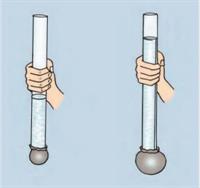Pressure Exerted By Liquids And Gases

key notes:
Pressure in Liquids:
- Pressure is the force applied on a surface per unit area. It is measured in Pascals (Pa), where 1 Pascal is equal to 1 Newton per square meter (1 Pa = 1 N/m²).
2. Liquids exert pressure in all directions. This is because the weight of liquid molecules above a certain point causes pressure.
- Pressure in a liquid increases with depth. The deeper you go in a liquid, the higher the pressure due to the increased weight of the liquid above.
- Pascal’s Principle: Pascal’s principle states that a change in pressure applied to an enclosed fluid is transmitted undiminished to all portions of the fluid and to the walls of its container.
Hydraulic Systems:
5. Hydraulic systems use the principle of transmitting pressure through liquids to amplify force. It’s commonly used in brakes, car lifts, and heavy machinery.
- In a hydraulic system, a small force applied to a small piston generates a larger force on a larger piston due to the transmission of pressure through the liquid.
Pressure in Gases:
7. Gases also exert pressure, but unlike liquids, this pressure is due to the constant motion of gas molecules.
- Boyle’s Law: Boyle’s law states that at constant temperature, the pressure of a gas is inversely proportional to its volume. P1V1 = P2V2, where P1 and V1 are initial pressure and volume, and P2 and V2 are final pressure and volume.
- Charles’s Law: Charles’s law states that at constant pressure, the volume of a gas is directly proportional to its absolute temperature (in Kelvin). V1/T1 = V2/T2, where V1 and T1 are initial volume and temperature, and V2 and T2 are final volume and temperature.
Applications:
10. Understanding pressure in liquids and gases is crucial for various applications like scuba diving, weather forecasting, and designing hydraulic machines.
- Atmospheric pressure decreases with increasing altitude, which is why it’s harder to breathe at high altitudes.
Measuring Pressure:
12. Pressure is measured using instruments like barometers for atmospheric pressure and manometers for pressure in closed systems.
- Common units for pressure include atmospheres (atm), millimeters of mercury (mmHg), and pounds per square inch (psi).
Let’s practice!

